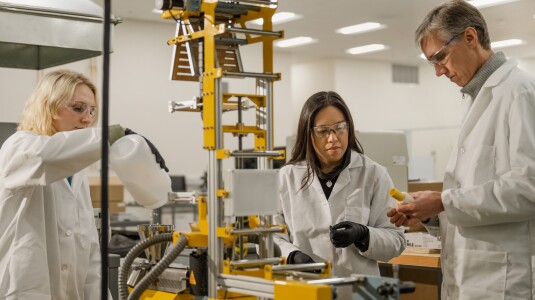Are you passionate about conducting research to develop and grow leaders? Would you like to impact more than 1M Amazonians globally and improve the employee experience? If so, you should consider joining the People eXperience & Technology Central Science (PXTCS) team. Our goal is to be best and most diverse workforce in the world. PXTCS uses science, research, and technology to optimize employee experience and performance across the full employee lifecycle, from first contact through exit. We use economics, behavioral science, statistics, and machine learning to proactively identify mechanisms and process improvements which simultaneously improve Amazon and the lives, wellbeing, and the value of work to Amazonians. We are an interdisciplinary team that combines the talents of science and engineering to develop and deliver solutions that measurably achieve this goal. This individual should be skilled in core data science tools and methods, icnluding SQL, a statistical software package (e.g., R, Python, or Stata), inferential statistics, and proficient in machine learning. This person should also have strong business acumen to navigate complex, ambiguous business challenges — they should be adept at asking the right questions, knowing what methodologies to use (and why), efficiently analyzing massive datasets, and communicating results to multiple audiences (e.g., technical peers, functional teams, business leaders). In order to move quickly, deliver high-quality results, and adapt to ever-evolving business priorities, effective communication skills in research fundamentals (e.g., research design, measurement, statistics) will also be a must. Major responsibilities will include: - Managing the full life cycle of large-scale research initiatives across multiple business segments that impact leaders in our organization (i.e., develop strategy, gather requirements, manage, and execute) - Serving as a subject matter expert on a wide variety of topics related to research design, measurement, analysis - Working with internal partners and external stakeholders to evaluate research initiatives that provide bottom-line ROI and incremental improvements over time - Collaborating with a cross-functional team that has expertise in social science, machine learning, econometrics, psychometrics, natural language processing, forecasting, optimization, business intelligence, analytics, and policy evaluation - Ability to query and clean complex datasets from multiple sources, to funnel into advanced statistical analysis - Writing high-quality, evidence-based documents that help provide insights to business leaders and gain buy-in - Sharing knowledge, advocating for innovative solutions, and mentoring others Inclusive Team Culture Here at Amazon, we embrace our differences. We are committed to furthering our culture of inclusion. We have 12 affinity groups (employee resource groups) with more than 1M employees across hundreds of chapters around the world. We have innovative benefit offerings, and host annual and ongoing learning experiences, including our Conversations on Race and Ethnicity (CORE) and AmazeCon (gender diversity) conferences. Amazon’s culture of inclusion is reinforced within our 14 Leadership Principles, which reminds team members to seek diverse perspectives, learn and be curious, and earn trust. Flexibility It isn’t about which hours you spend at home or at work; it’s about the flow you establish that brings energy to both parts of your life. We offer flexibility and encourage you to find your own balance between your work and personal lives. Mentorship & Career Growth We care about your career growth, too. Whether your goals are to explore new technologies, take on bigger opportunities, or get to the next level, we'll help you get there. Our business is growing fast and our people will grow with it. About the team We are a collegial and multidisciplinary team of researchers in People eXperience and Technology (PXT) that combines the talents of science and engineering to develop innovative solutions to make Amazon Earth's Best Employer. We leverage data and rigorous analysis to help Amazon attract, retain, and develop one of the world’s largest and most talented workforces.








